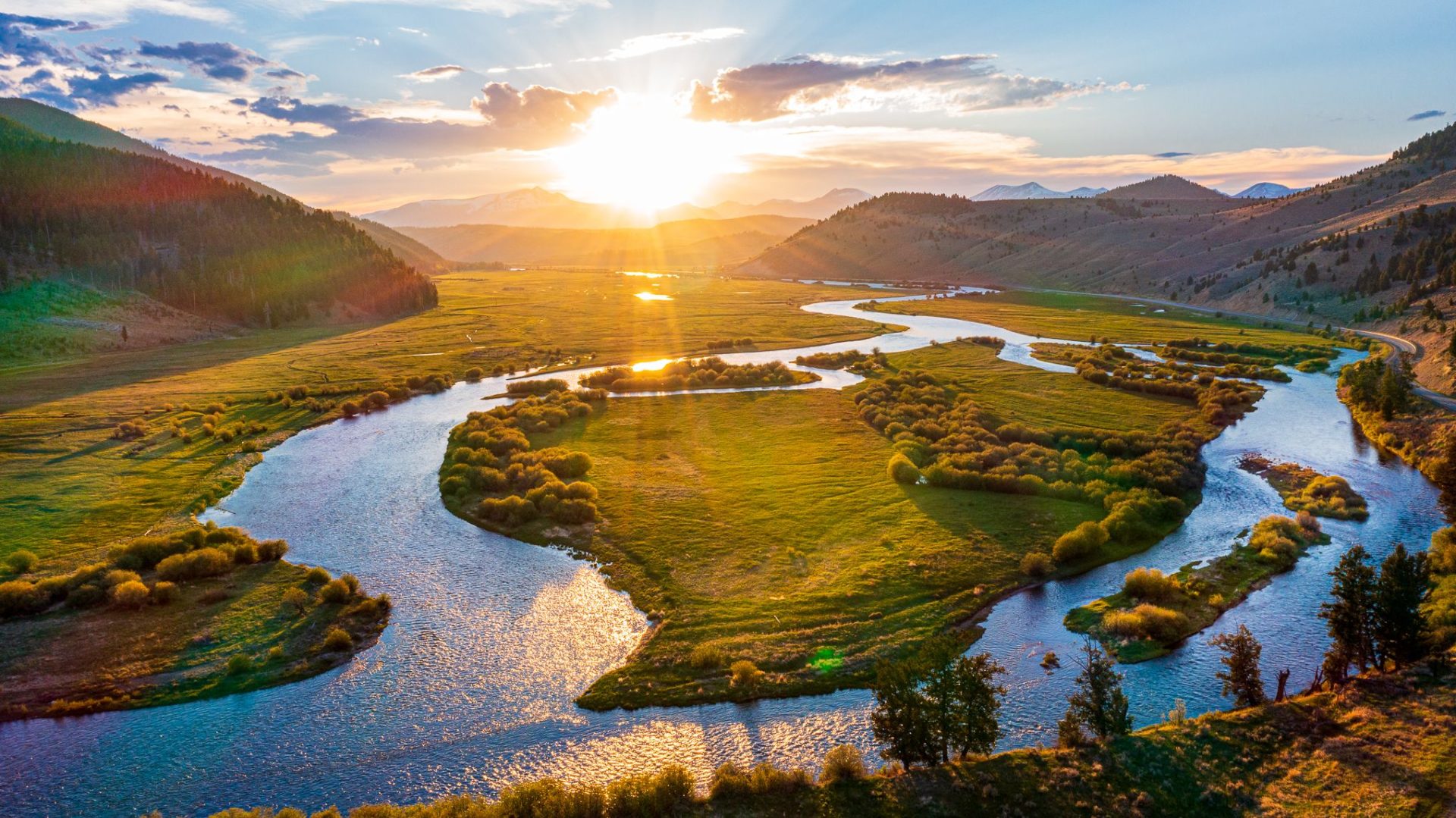[eye_row data_width=”container”][eye_column data_width=”0-12-0″][eye_text]
The Big Hole River is one of the greatest blue ribbon fly fishing rivers in Southwest Montana. The Big Hole River is a majestic and dynamic freestone river that flows more than 150 miles from its headwaters near Jackson, MT to its confluence with the Beaverhead River and Ruby River to create the Jefferson River. With a watershed that encompasses more than 2800 square miles, a total population of only a few thousand people and fish counts that average over 2000 trout per mile, the Big Hole River exemplifies the Montana fly fishing experience.
The Big Hole River has three distinctly different sections, all having their own unique characteristics. The upper Big Hole River is known for its expansive views of snowcapped mountains, pristine grassy meadows and slower, meandering water. The Canyon section, which runs from roughly Jerry Creek all the way to Melrose, is characterized by its scenic beauty and faster moving water bordered by rugged rock walls. The lower section, best known for its rangeland topography and braided side channels is the quintessential example of Big Sky Country. One characteristic all three sections have in common is their breathtaking scenery combined with phenomenal fly fishing.
The Big Hole River drainage also has a colored history, dating back to its “discovery” by Lewis and Clark, and is rich in Native American history and lore.
[/eye_text][/eye_column][/eye_row]

